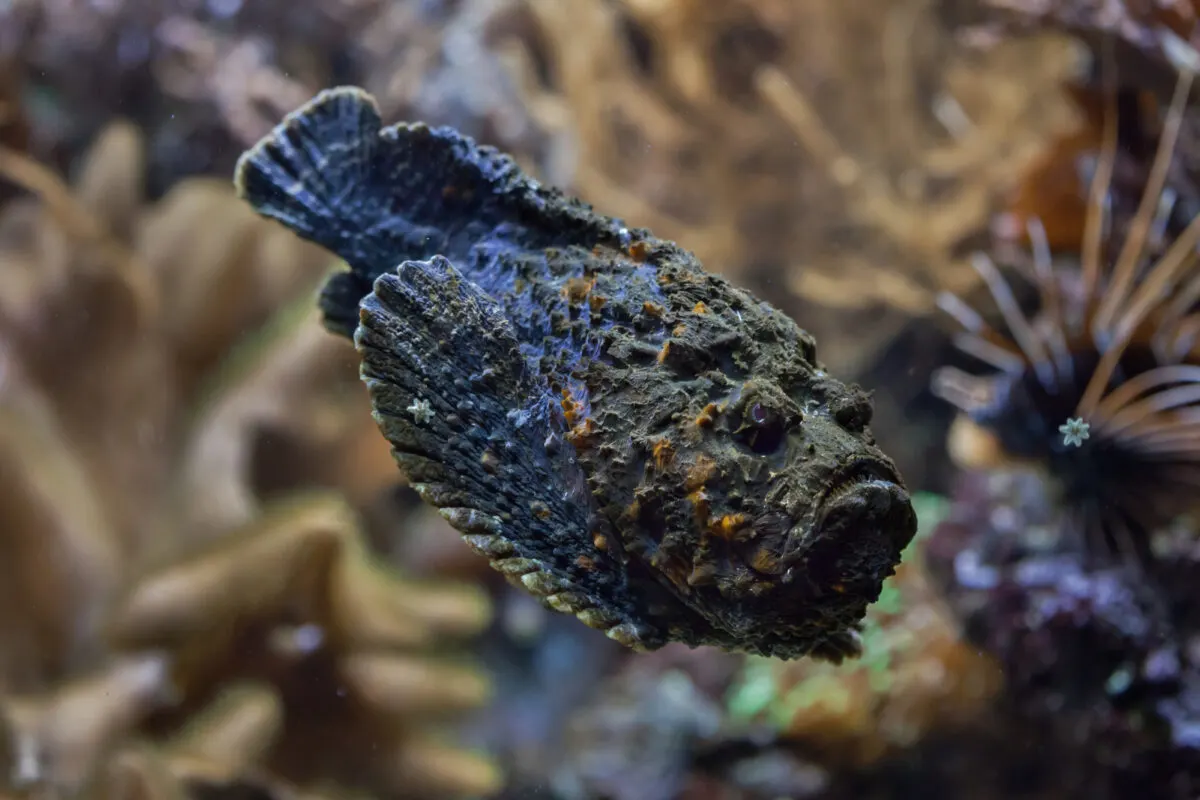In this post you’ll be introduced to the stonefish and its poisonous bite.
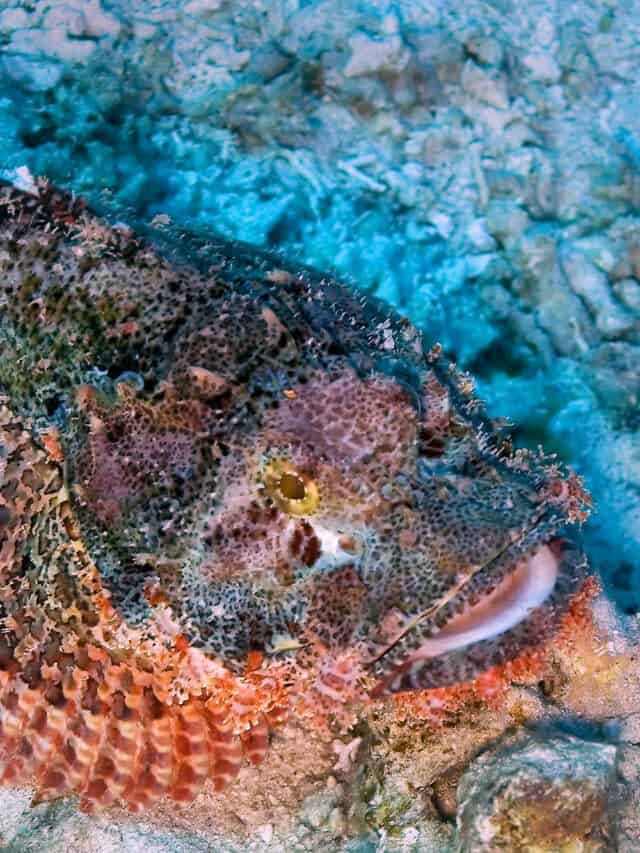
In the shallow waters and vibrant reefs of tropical regions, an insidious and sneaky predator hides —the stonefish. Renowned as one of the planet’s most vicious marine creatures, these fish possess a deceptive appearance, resembling stones with their mottled brown and gray skin.
However, their upward-facing spines hold a deadly secret, capable of inflicting excruciating pain through their potent venom. Encounters with a stonefish bite can lead to a range of symptoms, from localized inflammation to severe complications, such as respiratory distress, cardiovascular collapse, and even death.
For these reasons it’s highly advisable to educate yourself on how to avoid falling victim to a stonefish bite, as well as how to avoid encountering them all together.
Join us as we take you through all the ins and outs and must-knows of the stonefish and it’s painful bite!
Key Points
- Stonefish bites are highly venomous and can be extremely painful and life-threatening.
- Stonefish have camouflaged spikes on their backs, making them difficult to spot underwater.
- Bites can cause symptoms like nausea, muscle weakness, breathing difficulties, and heart failure.
- Stonefish are not aggressive but cause frequent medical emergencies, particularly in Australia.
- First aid treatment involves immediate action, spine removal, wound cleaning, pain management, and prompt medical assistance when necessary.
Understanding Stonefish Bites
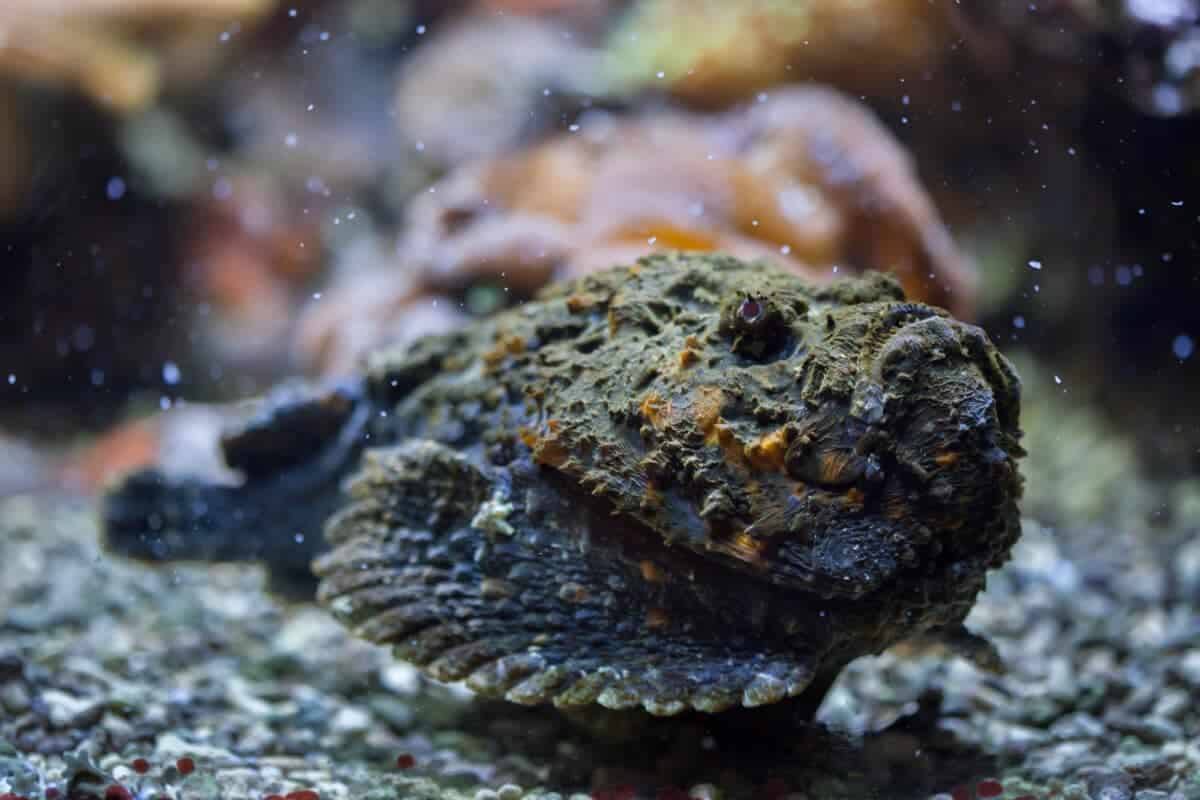
Stonefish are dangerous marine creatures known for their venomous bites, which can be incredibly painful and potentially life-threatening. These unique fish are masters of camouflage; they possess sharp spikes that are camouflaged on their backs, allowing them to blend in seamlessly with their surroundings.
For this reason, they often go unnoticed, and many unsuspecting swimmers accidentally step on them. Stonefish are commonly found in shallow waters throughout the Indo-Pacific region, including Australia, Southeast Asia, and the Pacific Ocean.
Stonefish bites are extremely painful due to the venomous glands located on their spines. These spines are equipped with tiny grooves that deliver venom straight into the wound, which can cause various symptoms, including nausea, vomiting, muscle weakness, breathing difficulties, and even heart failure.
The severity of the symptoms varies wildly, depending on the number of spines that have penetrated the wound, the fish’s size, and the injury’s depth.
In severe cases, victims may experience excruciating pain that spreads to the entire limb or body, swelling, and inflammation. In some cases, the venom can cause severe neurological damage or paralysis.
Despite their potentially deadly bites, Stonefish are not very aggressive creatures and usually only attack in self-defense. However, the statistics on stonefish bites are alarming. According to reports, stonefish bites are responsible for numerous medical emergencies yearly, with thousands of cases reported globally.
This is especially true in Australia, where stonefish bites are the most commonly reported nasty injury.
First Aid Treatment for a Stonefish Bite
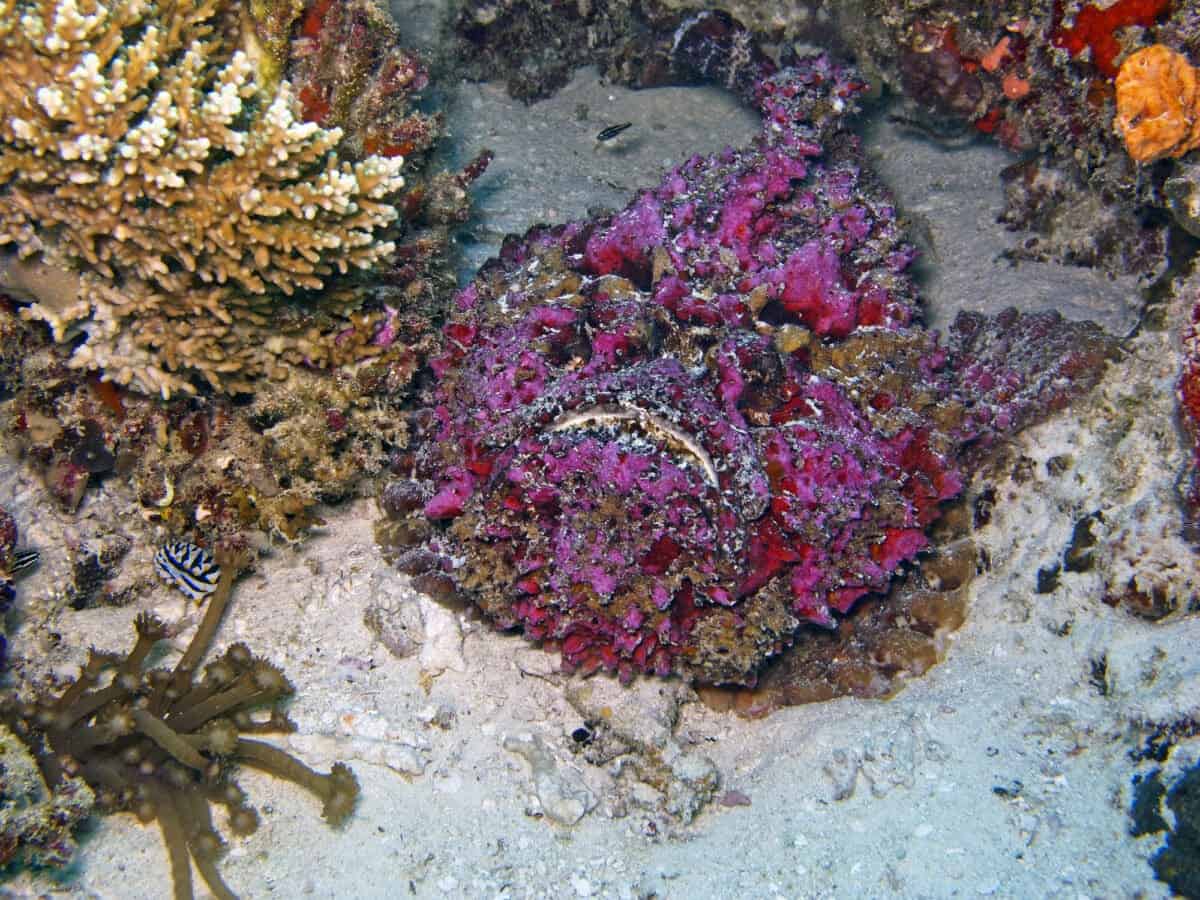
Stonefish stings are considered one of the most painful marine injuries that can occur. Stonefish are notorious for their incredible camouflage abilities, making them difficult to spot underwater.
They sport venomous spines that can cause severe pain, muscle weakness, and even cardiovascular collapse. Therefore, people who enjoy swimming, snorkeling, or diving in tropical marine environments should educate themselves on the proper first aid treatment for a stonefish bite.
#1 Immediate Actions
Stonefish like to bury themselves in the sand, and there is a possibility of getting multiple stings by stepping on additional fish around the area.
Therefore, it is essential to safely remove the person from the water without further injuring them or yourself.
Then, flatten the affected area and avoid moving it to minimize the venom spread throughout the body.
#2 Remove Foreign Objects
If the spine remains embedded in the wound, it should be removed immediately. The affected area should then be rinsed with salt water to ensure no other foreign objects remain inside the wound’s crevices.
#3 Clean and Stop Bleeding
After removing the embedded spine and any foreign objects, clean the wound with soap and water to eliminate any bacteria that could cause infection.
Apply pressure to the wound with a sterile bandage to stop the bleeding. It is also advisable to keep the injury elevated to reduce blood flow and slow potential venom spread.
#4 Managing Pain
Stonefish stings are excruciating and require immediate medical attention. Victims should immerse the wounded area in hot water as hot as they can tolerate it.
This will help to neutralize the venom and reduce pain sensation. In addition, over-the-counter pain medication or prescribed painkillers can also be given to alleviate the pain.
#5 Additional Tips
A hospital visit may be necessary in severe cases where the venom has spread throughout the body. However, other strategies could be used in tandem with first aid treatment for mild stonefish stings.
These include using vinegar on jellyfish tentacles or immersing the wound in saltwater. Sometimes a tetanus shot may also be necessary, especially for deep wounds. Keeping the damage clean from bacteria and monitoring its progress is critical.
Seeking Medical Help for a Stonefish Bite
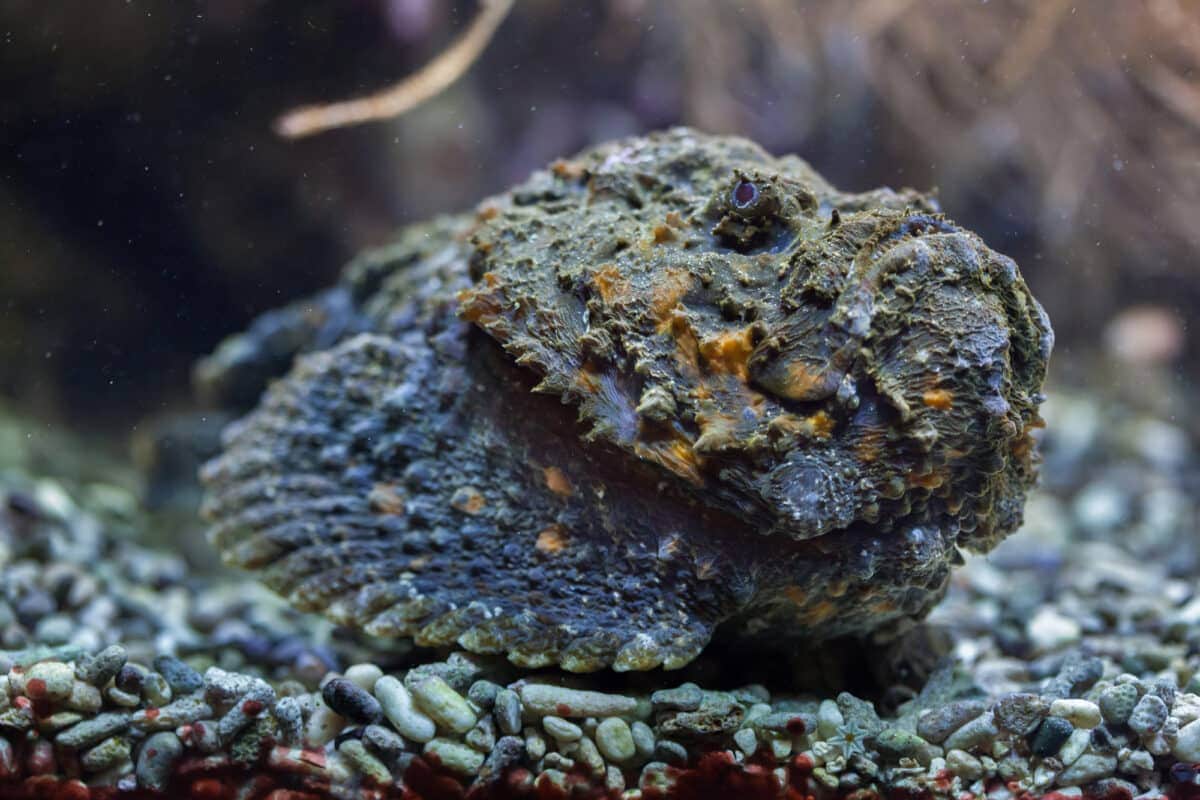
Why Seeking Medical Attention is Crucial
Even though a stonefish bite may not appear serious initially, any delay in seeking medical attention can result in severe complications. Stonefish venom is highly potent and can quickly spread throughout the victim’s body.
In some cases, the state of the bite may not be a good indicator of the severity of the injury. Therefore, it is always best to err on the side of caution and seek immediate medical help whenever bitten by a stonefish.
Indicators of a Severe Bite
Several indications indicate that a stonefish bite is severe and requires immediate medical attention. These include extreme pain that persists for more than a few hours, swelling that is spreading rapidly, difficulty in breathing, severe nausea or vomiting, and dizziness or fainting.
Additionally, if the bite is on the hand or foot, it may cause the victim to experience numbness or tingling in the affected limb. If these symptoms are present after a stonefish bite, the victim should seek emergency medical assistance immediately.
Recommended Medical Treatments
The medical treatments for a severe stonefish bite typically involve the use of antivenom and antibiotics. Antivenom is a medication that neutralizes the venom and helps to prevent further damage to the victim’s body.
Antibiotics are also used to avoid infection and to promote the healing of the wound. In addition to these medications, the victim may require additional pain management and injury care, depending on the severity of the bite.
Recovery Time and Long-Term Effects
The recovery time for a stonefish bite can vary depending on the injury’s severity and the medical treatment’s effectiveness. Most victims experience relief from pain and other symptoms within a few days of receiving medical attention.
However, recovery can take several weeks or even months in severe cases. In some instances, the long-term effects of a stonefish bite can include chronic pain, nerve damage, and reduced mobility in the affected limb.
Therefore, following the recommended treatment plan and adhering to any follow-up appointments is essential to reduce the risk of long-term complications.
Conclusion
In conclusion, it is essential to take precautionary measures to avoid being bitten/stung by a stonefish. This can be done by wearing protective footwear while walking in areas with coral reefs, particularly in shallow waters where Stonefish are commonly found. It is also crucial to avoid putting your hands or feet in places you cannot see, as this can lead to unintentional contact with a stonefish.
In the event of a stonefish bite, it is essential to seek medical attention immediately. While waiting for medical help, washing the affected area with warm water for at least 30 minutes is vital. This can help to neutralize the venom and minimize the extent of the injury.
As time is of the essence, learning first-aid interventions for a stonefish bite is essential. This can include immobilizing the affected area and elevating it to reduce swelling.
Overall, the consequences of a stonefish bite can be severe and even fatal in some cases. By taking the necessary precautions and learning how to treat a stonefish bite properly, individuals can help to minimize the risk of injury and ensure proper care in the event of an accident.
Thank you for reading this article about the stonefish bite! Continue exploring more toxic marine residents by reading our post on the most dangerous jellyfish or the hedgehogs of the ocean (a.k.a sea urchins.)
Join our Forum for free today!


